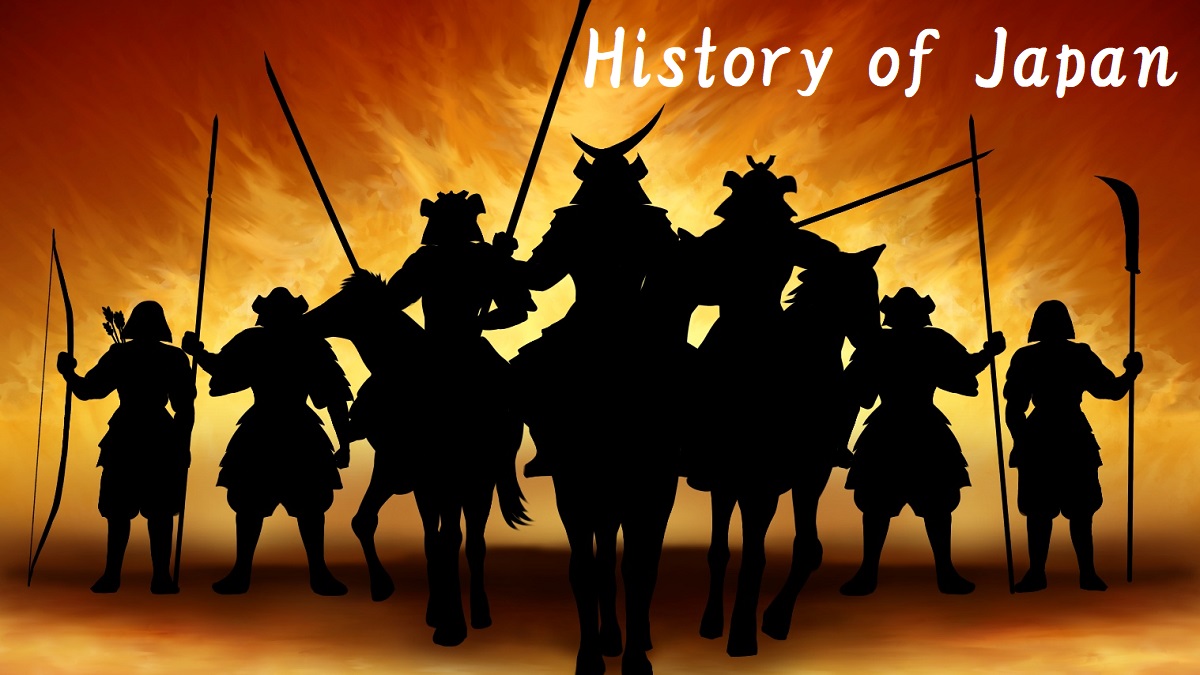History of Japan
About Japanese history
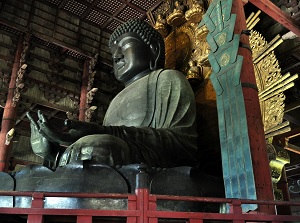
Great Buddha built in 752 in Nara city
Photo by Railstation.net
Japan has a history of over 2,000 years.
Japan is an island country, and its original culture was born.
After the defeat of the Pacific War (World War II) in 1945, the allied forces occupied Japan until 1952.
Except for the period, Japan has not been occupied and colonized by any other country in the long history.
Since the ancient time, the leading role in the history has been the Emperor (Ten-no in Japanese).
Ancient Japan learned many things from ancient China.
After that, Japan had created the own nation.
The nation was governed by the Emperor and the family.
In the middle years, samurai governed the country as the substitute of the Emperor.
Of course, the power struggle sometimes occured.
Western people knew that there was a country named Japan in the Far East in the 13th century.
The first western people came to Japan in the middle of the 16th century.
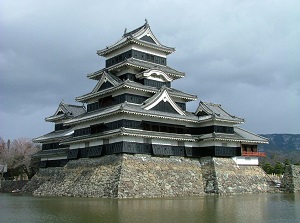
Matsumoto Castle built around 1600 in Matsumoto city
Photo by Railstation.net
In the 19th century, Japan learned modern nation from the Western countries.
And, Japan changed from a feudal nation to a modern industrialized nation earlier than other Asian nations.
But, in the early 20th century, Japan ran its course toward the War since the Great Depression.
By two atomic bombs, Japan defeated in 1945.
Destroyed Japan revived, developed, and became the Japan of today.
Above story is too rough.
If you want to know a little detailed history of Japan, please read the following page.
Emperor and Samurai in Japanese history
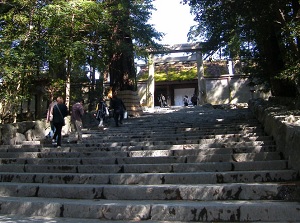
Ise Shrine enshrining the gods of the Emperor's ancestors
Photo by Railstation.net
As above, Emperor (天皇, Ten-no) has been the head of Japan since ancient times.
Now, Japan is in the reign of the 126th Ten-no.
The Japanese emperor system has been hereditary completely.
The first Ten-no appeared in 660 B.C. and he founded Japan.
But that is not certain, and was described in Japanese mythology.
Currently, the 26th Ten-no can be identified with a real person, and he existed in the early 6th century.
Since that, Japanese Emperor family has succeeded to the Imperial Throne continuously for at least 1,500 years.
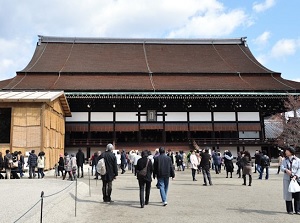
Kyoto Imperial Palace
Photo by Railstation.net
Until the 12th century, the Emperor and the family had governed the nation.
The capital was around Nara area, then it was moved to Kyoto in 794.
Emperor family needed the guards to protect from revolt and leaking of confidential information.
They are the origin of Samurai (侍), and are also called Bushi (武士).
As the centuries roll by, they began taking power.
In the 13th century, though the Emperor was the top of Japan, Samurai began to steer the nation.
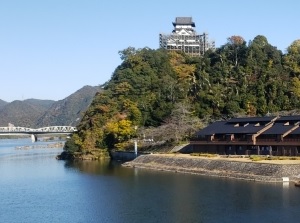
Inuyama Castle in Aichi Prefecture
In the mainland except for Hokkaido, there were strong samurai family in local areas and had governed the area as the lord.
Each territory is similar to current prefecture.
From 15th to 16th centuries, many local lords battled to expand the own territory and Japan became in a domestic conflict.
To make the battle advantageous, they schemed to gain Ten-no over to their side.
The strategic center of the battle was Japanese castle.
In the beginning of the 17th century, Tokugawa Ieyasu unified the whole country and established the stable feudal government by samurai.
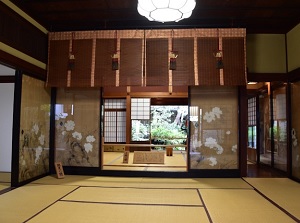
Samurai residence in Kanazawa city
Photo by Railstation.net
Ten-no was in Kyoto, but the government was set up in Edo (current Tokyo).
Since that, Tokyo developed rapidly and became the largest city in Japan.
This period is called "Edo Period", and various traditional Japanese cultures were created such as "sushi", "kabuki", "sumo", "ukiyoe", etc.
In 1868, Tokugawa government overthrew by progressive young samurais and the modern Meiji government was established.
The era of samurai finished.
Hokkaido had been an uncolonized land, but Meiji government developed the land from the period.
Therefore, there are few remains relating to samurai in Hokkaido.
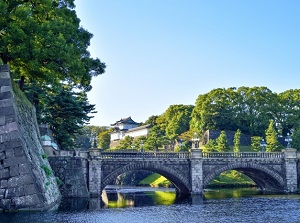
Kokyo (Imperial Palace) in Tokyo
Ten-no moved to Tokyo and the capital of Japan also was moved from Kyoto to Tokyo.
Ten-no and his family have been living in Kôkyo (皇居) in the center of Tokyo.
Until the end of World War II, Ten-no was the head of Japanese government.
After the defeat of the war, Ten-no became the symbol of Japanese people in the current Constitution of Japan.
Prewar period and postwar period
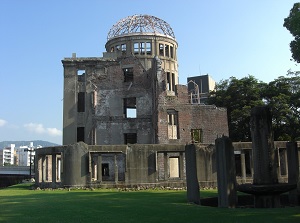
Atomic Bomb Dome in Hiroshima city
Photo by Railstation.net
There were two big turning points of Japanese society in the history.
One is the Meiji Restoration in 1868, and it was the change from feudal samurai sociery to modern state.
Another is the Pacific War (World War II) from 1941 to 1945.
In the "Prewar period", Japan was the country under imperialism.
In the Pacific War, all Japanese people were forced to join the war.
And two atomic bombs were dropped for the first time in human history.
More than 3 million people died in the war.
In the "Postwar period", Japan was reborn as the peaceful democratic nation.
Even now, the words of "prewar" and "postwar" are sometimes used in the discussion about politics and social activities.
Tourist spots relating to history of Japan
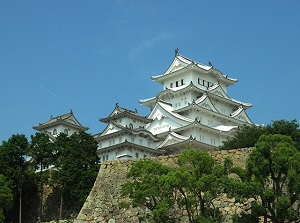
Himeji Castle in Hyogo Prefecture
Japanese castles are the most attractive historical structures.
The structures before Edo Period were almost simple forts, but large castle towers were built as the center of local government in Edo Period.
After the end of feudal period in 1868, Meiji government demolished many casles in whole Japan.
And some of preserved castles were destroyed by US air raids in the World War II.
Now, 12 original castles are remaining.
They are in the following city.
Hirosaki, Matsumoto, Maruoka, Inuyama, Hikone, Himeji, Matsue, Bitchu-Matsuyama, Marugame, Matsuyama, Uwajima, Kochi
And the castle towers in many cities such as Osaka, Nagoya, etc. were rebuilt in the 20th century as the historical museum.
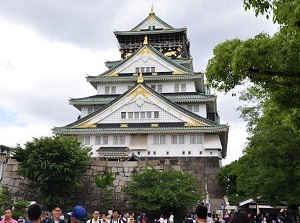
Osaka Castle in Osaka Prefecture
Photo by Railstation.net
Edo Castle in Tokyo was the largest castle in Japan, but the castle tower didn't rebuilt after the destruction by fire in 1657.
But the wide site became current Kôkyo.
Around the major castle, the town for the samurais working in the castle was constructed and the town of merchants were formed out of the samurai town.
Some castle towns reserve the residences, the houses and the storehouses of the merchants in the period.
These are also the tourist attractions.
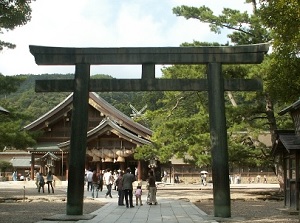
Izumo-taisha shrine in Shimane Prefecture
Photo by Railstation.net
Shinto is the Japanese native religion from the ancient times.
The idea is based on the nature and ancestor worship.
And, Buddhism has also been the main religion in Japan since the 6th century.
The sacred place of the religions are Shinto shrine and Buddhist temple.
They are in any city, town and village in Japan.
These are also the tourist attractions.

Zenkoji temple in Nagano city
Photo by Railstation.net
Shinto has been connected with Japanese Emperor System since the ancient times.
And Buddhism had been the base of government in the 8th century.
Since that, Buddhism had been the base of Japanese society.
The spots about the Pacific War are throughout the country.
Most of them are the museums and monuments introducing the battle and the damage.
Especially, it will be your only experience in the world to visit A-bombed Hiroshima and Nagasaki.

